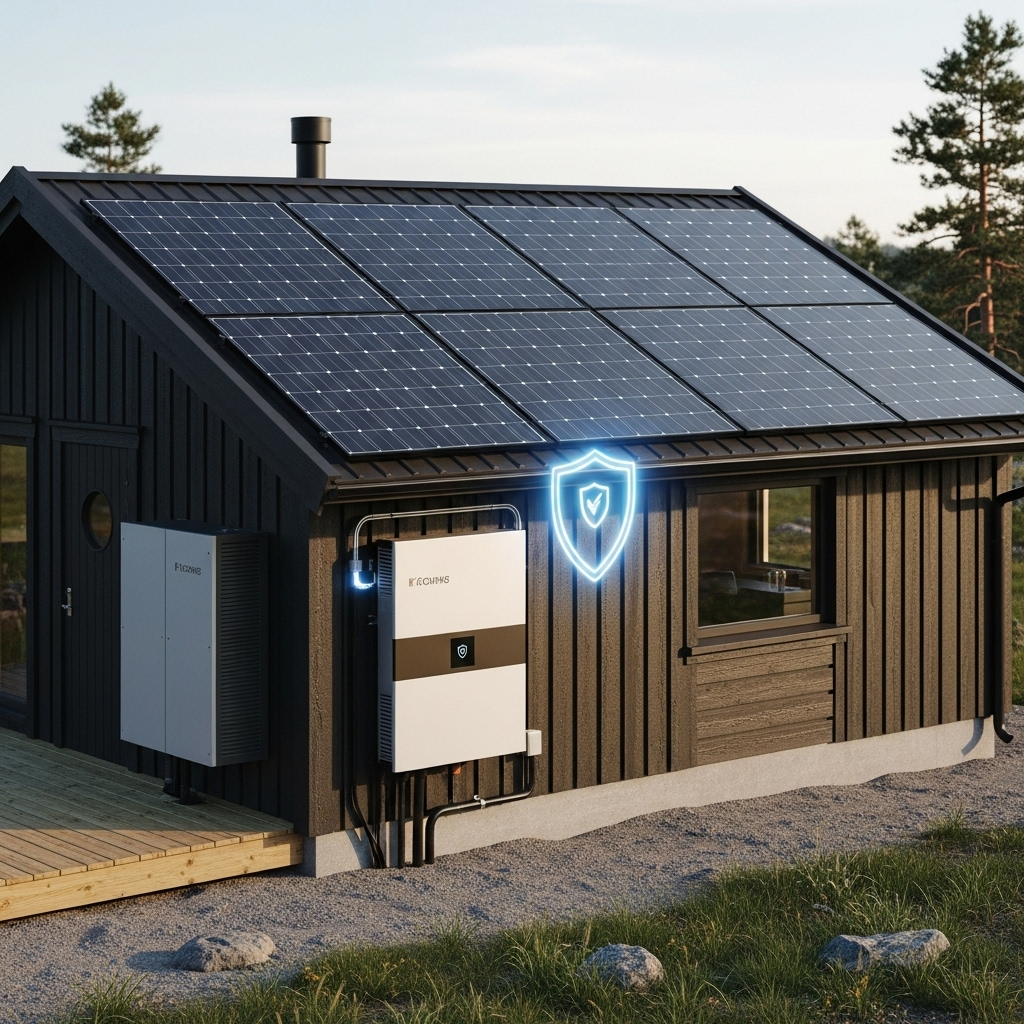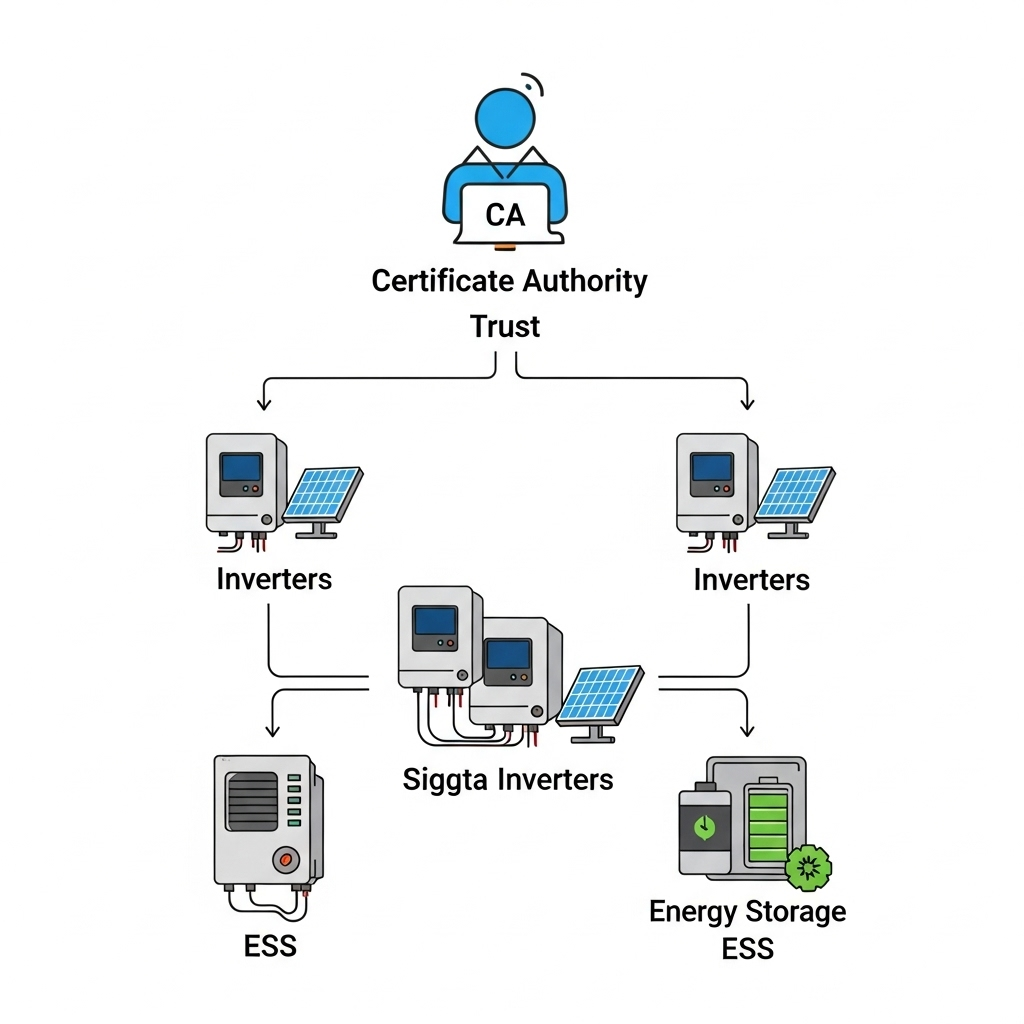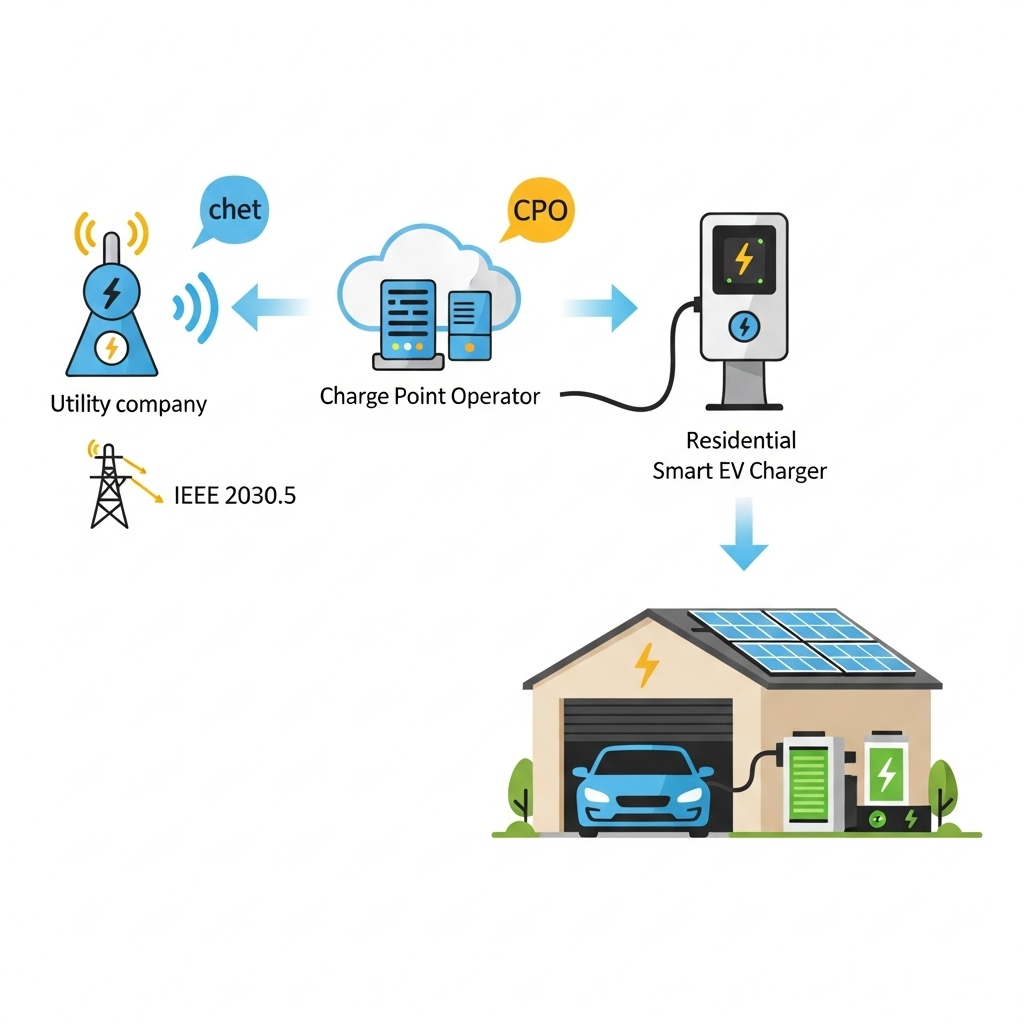The dream of energy independence often leads to an off-grid solar system. A common belief is that by physically disconnecting from the grid—creating an 'air gap'—your power supply is automatically safe from cyberattacks. This idea is comforting but dangerously incomplete. True off-grid solar cybersecurity requires a deeper look beyond the simple notion of being disconnected.
The 'Air-Gapped' Illusion in Modern Solar Systems
The concept of an air gap comes from high-security environments where computers are physically isolated from any network. For an off-grid solar installation, this seems straightforward. If there's no internet cable, there's no risk. Reality, however, is more complex.
What an Air Gap Traditionally Implies
A true air gap means zero digital connections to the outside world. No Wi-Fi, no Bluetooth, no Ethernet, no cellular connection. Data only moves via physical media, like a USB drive, under strict protocols. This level of isolation is rare in residential or commercial solar setups.
The Connectivity Creep in Off-Grid Systems
Modern solar components are designed for convenience and performance monitoring. Your system might be 'off-grid,' but it likely has connection points that can breach the supposed air gap. These include:
- USB Ports: Used for firmware updates, diagnostics, and data logging. An infected USB drive can introduce malware directly into your inverter or energy storage system (ESS).
- Bluetooth or Local Wi-Fi: Many inverters create their own local network for monitoring via a smartphone app. While convenient, an unsecured local network is a potential entry point.
- Technician Access: When a technician services your system, they connect a laptop. If their device is compromised, your system can be too. This temporarily bridges any air gap you thought you had.
The Human Factor: An Unseen Bridge
The most unpredictable variable is human interaction. An employee or homeowner might connect a personal phone to the inverter's local interface for a quick check. A technician might use a company-issued but compromised laptop for a firmware update. Each action is a potential security incident waiting to happen, effectively creating a bridge for threats to cross.
Hidden Vulnerabilities in Off-Grid Components
Even in a perfectly isolated system, vulnerabilities can exist within the components themselves. The discussion around renewable energy integration is often filled with misconceptions, a point noted in reports like the IEA's Getting Wind and Solar onto the Grid, and cybersecurity is a prime area for such myths.
Inverter and ESS Communication Security
Your solar inverter, battery, and charge controller are not passive boxes; they are computers that communicate with each other. This internal network, or bus communication, is a potential attack surface. If a malicious actor gains access to one component, they could potentially send false commands to another, causing damage or a system shutdown. Securing this internal inverter communication security is critical.
Firmware and Software Risks
The firmware is the operating system of your hardware. A vulnerability in the firmware code could be exploited. The most common vector is the update process. If you download firmware from an unverified source or apply it with an infected device, you are handing over control of your system. This is why a secure update process, using code signing and trusted sources, is a priority for energy sector cybersecurity.
The Supply Chain Threat
A more sophisticated threat involves the supply chain. Malicious code or hardware can be embedded in a component during manufacturing or shipping. While less common for individual owners, it's a recognized risk for critical infrastructure. You trust that the components you buy are secure, but this trust can be exploited.
Building a Truly Resilient Off-Grid System
Real ESS cyber safety is not achieved by assuming an air gap provides total protection. It comes from building layers of defense and adopting a proactive security posture.
Adopting a Zero-Trust Mindset
The U.S. Department of Energy has championed a 'zero-trust' architecture as a game-changing technology. In their research on energy networking, they explain that a zero-trust model assumes any network is potentially compromised and requires strict verification for every device and user. For your off-grid system, this means you don't automatically trust any device you connect. Every connection is a potential risk that must be managed.
Securing Physical and Digital Access Points
You can take practical steps to harden your system:
- Physical Security: Keep your inverter and ESS in a locked, secure location to prevent unauthorized physical access.
- Port Discipline: Physically disable or cover unused USB or Ethernet ports. If you don't need it, block it.
- Strong Credentials: If your inverter has a local admin interface, change the default password to something long, unique, and complex.
- Device Hygiene: Use a dedicated, clean laptop or USB drive for any system maintenance. Scan all devices for malware before connecting them to your solar equipment.
The Role of Hardware Security
For those seeking the highest level of security, hardware solutions like data diodes offer robust protection. A DOE-backed project successfully used low-cost data diodes to protect solar plants. A data diode is a hardware device that allows data to flow in only one direction. You could use one to send monitoring data out from your system without creating any pathway for commands to come back in, creating a hardware-enforced, truly secure one-way information flow.
Performance Monitoring and Anomaly Detection
Vigilance is a powerful security tool. By understanding your system's normal behavior, you can spot anomalies that might indicate a problem—whether it's a failing component or a cyber incident.
Why Consistent Monitoring Matters
Regularly checking your system's output, battery charge levels, and overall efficiency establishes a performance baseline. A sudden, unexplained drop in performance is a red flag. It could be a simple mechanical issue, but it could also be a symptom of malicious software disrupting operations.
Key Performance Indicators to Track
Monitoring key metrics is crucial for both system health and security. Important indicators include State of Charge (SoC), Depth of Discharge (DoD), and round-trip efficiency, which measures the energy you get out of your battery versus the energy you put in. For a detailed breakdown of these metrics and how to interpret them, you can consult this ultimate reference on solar storage performance. Tracking these figures helps you maintain optimal performance and spot deviations quickly.
| Metric | What It Indicates | Security Relevance |
|---|---|---|
| State of Charge (SoC) | The current charge level of your battery. | Sudden, illogical drops could indicate unauthorized power draws or system manipulation. |
| Inverter Efficiency | The ratio of AC output to DC input. | An unexpected dip in efficiency might signal firmware tampering or disruptive malware. |
| System Uptime | The amount of time the system is operational. | Frequent, unexplained reboots or shutdowns are a classic sign of unstable or malicious software. |
Beyond the Myth of the Air Gap
Achieving energy independence with an off-grid solar system is a powerful goal. However, securing that independence requires more than just cutting ties with the utility grid. The myth of the 'air-gapped' secure system is a relic of a simpler time. In today's connected world, even isolated systems have doors.
True off-grid solar cybersecurity is about acknowledging these doors and locking them. It involves a layered strategy of physical security, digital hygiene, a zero-trust mindset, and vigilant monitoring. By moving past the myth and embracing these realities, you can protect your investment and ensure your independent power source remains reliable and resilient for years to come.
Disclaimer: This content is for informational purposes only and does not constitute professional cybersecurity or financial advice. Always consult with a qualified professional for your specific needs.
Frequently Asked Questions
Is my small, simple off-grid cabin solar system at risk?
The risk is lower, but not zero. Any system with a modern inverter that has a USB port for updates or a local monitoring interface can be a target. The risk increases if you ever have a technician service it or if you perform firmware updates yourself. Basic security practices, like using a clean USB drive, are always a good idea.
How can I securely update my inverter's firmware?
First, only download firmware directly from the manufacturer's official website. Never use a file from a forum or a third-party site. Second, use a dedicated USB drive that is used for nothing else. Before downloading the file, scan your computer for viruses. Before updating, scan the USB drive again. This process minimizes the risk of transferring malware.
What is the single most important security step for an off-grid system owner?
Controlling physical and digital access. This means keeping your equipment in a locked space and being extremely cautious about what you plug into it. Changing default passwords on any local interfaces is a close second. These two actions eliminate the most common and easiest attack vectors.
Does using a LiFePO4 battery improve my system's cybersecurity?
Not directly. A high-quality LiFePO4 battery enhances safety and reliability due to its stable chemistry, but it doesn't have inherent cybersecurity features. The security of your energy storage system (ESS) depends on the Battery Management System (BMS) and the inverter it's connected to. The battery itself is a passive component in the digital security chain.





Leave a comment
All comments are moderated before being published.
This site is protected by hCaptcha and the hCaptcha Privacy Policy and Terms of Service apply.